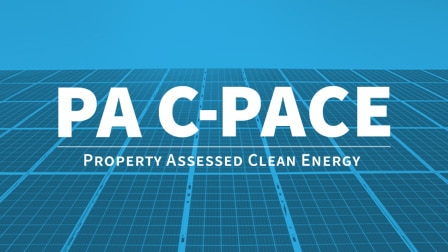Sustainable Energy Fund is pleased to announce the official dates for our 13th annual Energypath 2026, which...
» Read MoreA New Tool for Evaluating COVID-19 Indoor Safety Guidelines
Sustainable Energy Fund is not a COVID-19 expert. The following article is for informational purposes only and the featured model should be evaluated with consultation of medical professionals.
The onset and continuing spread of COVID has undoubtedly raised a great deal of uncertainty and a new host of concerns. From how we interact with others to how we exist in public spaces, our daily lives have been challenged in ways unseen and unexpected.
What has been most challenging is the unknown. As we grapple with social distancing and occupancy limits, finding ways to quantify the risk while occupying indoor spaces might not only diminish concerns but also provide metrics by which these risks can be managed. While theoretical models and risk assessments with regard to aerosol pathogens have been developed, a new online tool has been developed that building owners and facility managers can use as a safely guideline to better manage the risk associated with COVID-19 for occupied spaces.
This tool, developed by chemical engineer Kasim Khan in collaboration with MIT professors Martin Z. Bazant and John W. M. Bush, draws from Bazant and Bush’s research Beyond Six Feet: A Guideline to Limit Indoor Airborne Transmission of COVID-19 as well as the edX MOOC course Physics of COVID-19 Transmission. The tool comes in the form of an online calculator that allows users to input data specific to their space to quantify the potential risk of transmission. The calculator allows the user to input the specific conditions relating to the two biggest factors for infection risk in an enclosed space – the physical aspects of that space and the behavior of the persons within. The output of this calculator provides guidance for how safe a space may be for a given number of people over a certain period of time.
It is important to note that any approach or action undertaken by building owners or operators should, before anything else, adhere to the guidelines set forth by the Center for Disease Control (CDC). The CDC’s Guidance for Businesses and Employers provides robust and comprehensive information on how to best ensure the safety of employees and occupants, including preventative measures, hazard assessments, and protocols, should any space become exposed to an infection.
What the Calculator Measures
Human Behavior
There are four primary components to human behavior that may influence transmission in an enclosed space:
· Breathing rate
· Respiratory activity
· Mask type/efficacy
· Mask fit/compliance
While they sound similar, breathing rate and respiratory activity have nuanced differences: breathing rate is reflective of the level of a person’s activity (resting, standing, engaged in exercise); respiratory activity refers only to a person’s respiratory actions – breathing, talking, or even singing. A higher level of activity, whether physical or through respiration, can increase risk. Mask use also plays a role, in two capacities: the type of mask used and the level of compliance by the user. Certain masks may be more effective at preventing transmission than others, and regardless of what type of mask worn proper usage will decrease risk (both the CDC and the WHO offer comprehensive guidance on mask use).
Indoor Spaces
The physical attributes of indoor spaces also play a significant role with how pathogens spread. Pathogens exist in a fluid space – air – and the characteristics of that air dictate how pathogens may circulate within that space. The greater volume of air available, the more dispersed pathogens will be, reducing the likeliness of transmission. Ventilation and filtration have the greatest potential to impact transmission rates. Ventilation – the introduction of fresh air through a fan, air handler, ERV, or other similar equipment – can have a notable impact on infection risk. As fresh air is introduced, inside air leaves the building, carrying with it some of the pathogens. The higher the ventilation rate, the greater the dilution of the pathogen and subsequent decrease in infection risk. Filtration also has a significant impact, as higher levels of filtration can filter out more pathogens (ASHRAE recommends at least a filter efficiency of at least MERV 13). Recirculation rates and humidity also have minor roles, as decreased circulation and humidity may each increase transmission risk.
How the Calculator Works
By accounting for all these factors together – mask type and compliance, the ventilation, filtration, and volume of a space, etc. – the calculator can offer guidance on how safe it may be for a certain number of people to occupy a space for a certain amount of time. This guidance may be used by building owners and facility managers to determine how many people may occupy a particular space, and for how long. For example, if a building owner has a 1000 ft2 space, with an ERV that provides 8 air changes per hour (ACH), has a MERV 10 filter in place, and can account for the occupants’ mask compliance, they may find that there should be no more than 25 people in that space for more than 6 hours. The more people in a given space, or the longer they spend within that space, the greater a risk of transmission – so more people may be allowed, but for less time, or if more time were needed (for an 8 hour workday, for example), less people would be able to safely occupy that space.
Conclusion
It is important to understand that this calculator is only a tool to measure – it is not a fool-proof way of ensuring occupants will not contract COVID. What it does provide is guidance by which building owners, operators, and managers can start to understand with greater clarity the primary factors that contribute to COVID-19 transmission in indoor spaces and how they can be managed to provide a safer indoor environment. By adhering to CDC guidelines, seeking a better understanding of the factors that influence transmission risk, and a taking proactive approach towards reducing those risks, we may find greater assurance in how we return to work and events safely.







